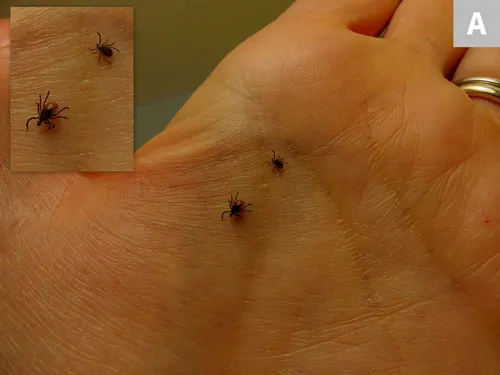This response is correct!
Image Gallery: Ticks of the Northeastern United States
Heidi Goethert, ScD, Tufts University
Over recent decades, the incidence of tick-borne diseases has been steadily increasing as many species of ticks expand their range into new areas and increase their abundance in areas where they are already present.
A clinician's ability to make an accurate differential diagnosis for a patient showing clinical signs is greatly enhanced through knowledge of the tick species found where the patient may be exposed and the diseases those ticks transmit.
All hard-bodied ticks have 4 life stages: egg, larva, nymph, and adult. Larvae and nymphs must feed on blood to develop to nymphs and adults, respectively. Adult female ticks require blood to lay eggs; depending on the type of tick, males may or may not be able to transmit infection. Ixodes spp males may attach and briefly feed but do not take a full blood meal and are unlikely to transmit infection; most others do feed and have been shown to transmit infection.
The following images feature ticks commonly identified on humans and companion animals in the northeastern United States, though their range may extend throughout much of North America. Attached ticks may be in varying degrees of engorgement when found infesting a host; these images represent the active host-seeking stage and may also help identify a tick attached to a host for less than 24 hours. The ticks were photographed on the author's hand to show scale; a close-up view is included to show details useful for identification.

Figure 1A
Male (A) and nymphal (B) deer ticks (Ixodes dammini), also known as blacklegged ticks or the northern clade of Ixodes scapularis.1,2 These ticks are distinguished by their oval shape and dark black legs and mouthparts. The female tick has a small black dorsal shield and a red body, whereas the male tick has a black dorsal shield covering its entire body.
Deer ticks are typically found in the northeastern United States from Virginia north into Canada, as well as in Wisconsin and Minnesota, though their range is rapidly expanding.3,4 They serve as the vectors for Lyme disease (Borrelia burgdorferi),5 anaplasmosis (Anaplasma phagocytophilum),6 babesiosis (Babesia microti),7 Borrelia miyamotoi,8 ehrlichiosis (Ehrlichia muris),9 and deer tick virus encephalitis (a subtype of Powassan virus).10 All active stages, except for the adult male, feed on a variety of animals.